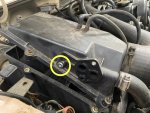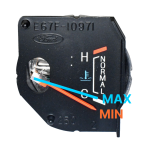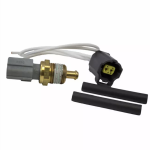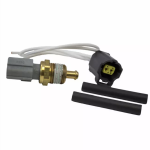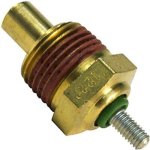turner
Member
- Joined
- Jul 21, 2021
- Messages
- 31
- Reaction score
- 13
- Points
- 8
- Location
- Santa Cruz, CA
- Vehicle Year
- 1987
- Make / Model
- Ford Ranger
- Engine Type
- 2.3 (4 Cylinder)
- Engine Size
- 2.3L
- Transmission
- Manual
- 2WD / 4WD
- 4WD
Ok, opening this back up. After that last fail I gave up and just drove illegally for a while. Going to try another test here soon.
First thing I did today was another round of EEC IV tests. Got TPS out of range, and it was indeed too high at throttle closed. This TPS is <2 years old but it's pretty unstable. When I installed it, I'm 100% sure I set it correctly just below 1V. This time, I couldn't get it below 1.2V turned all the way, so I removed some material from the mounting arms to rotate it more. It sits right around 0.9V, although it hunts without anyone touching the throttle, 0.9 - 1.1V, which makes the idle RPM hunt. It stopped doing that long enough for me to move on. Ordered a new one just in case.
I also remembered that the smog tech had tried to "adjust idle" which made me think he fooled with the stall screw. Sure enough, it wasn't touching the throttle. So I got that reset so the truck idles at 650rpm with the IAC unplugged.
Went ahead and checked the timing. I didn't have the same problem as the smog tech. When I remove the SPOUT plug, RPMs drop, and a timing light reads a hair above 10°.
Ran the engine off test again, and passed that.
Ran engine ON test, and it gives me a code 13: RPM too low at idle. This is definitely not true, it settles nicely to 875 (when the TPS isn't glitching). During the test, the throttle push causes the engine to stumble momentarily after release, but otherwise the RPM actually seems high. During the test it sat above 1100rpm. Turn off the tester, back to 875.
I ran the test 6 times today in all, and got 13 every time. The last one also threw code 21: cooling temp sensor (or ECT) out of range. This is frustrating because I just replaced that, like less than 50 miles ago. I'm pretending that test didn't happen.
Part of me thinks I should do another smog test, since the fault that failed me is now gone. On the other hand, these tests are $80, and I've got active codes. By the time I get this truck passed, I'll be less than a year away from my next one
Any ideas what would be causing the 13 code?
First thing I did today was another round of EEC IV tests. Got TPS out of range, and it was indeed too high at throttle closed. This TPS is <2 years old but it's pretty unstable. When I installed it, I'm 100% sure I set it correctly just below 1V. This time, I couldn't get it below 1.2V turned all the way, so I removed some material from the mounting arms to rotate it more. It sits right around 0.9V, although it hunts without anyone touching the throttle, 0.9 - 1.1V, which makes the idle RPM hunt. It stopped doing that long enough for me to move on. Ordered a new one just in case.
I also remembered that the smog tech had tried to "adjust idle" which made me think he fooled with the stall screw. Sure enough, it wasn't touching the throttle. So I got that reset so the truck idles at 650rpm with the IAC unplugged.
Went ahead and checked the timing. I didn't have the same problem as the smog tech. When I remove the SPOUT plug, RPMs drop, and a timing light reads a hair above 10°.
Ran the engine off test again, and passed that.
Ran engine ON test, and it gives me a code 13: RPM too low at idle. This is definitely not true, it settles nicely to 875 (when the TPS isn't glitching). During the test, the throttle push causes the engine to stumble momentarily after release, but otherwise the RPM actually seems high. During the test it sat above 1100rpm. Turn off the tester, back to 875.
I ran the test 6 times today in all, and got 13 every time. The last one also threw code 21: cooling temp sensor (or ECT) out of range. This is frustrating because I just replaced that, like less than 50 miles ago. I'm pretending that test didn't happen.
Part of me thinks I should do another smog test, since the fault that failed me is now gone. On the other hand, these tests are $80, and I've got active codes. By the time I get this truck passed, I'll be less than a year away from my next one
Any ideas what would be causing the 13 code?

